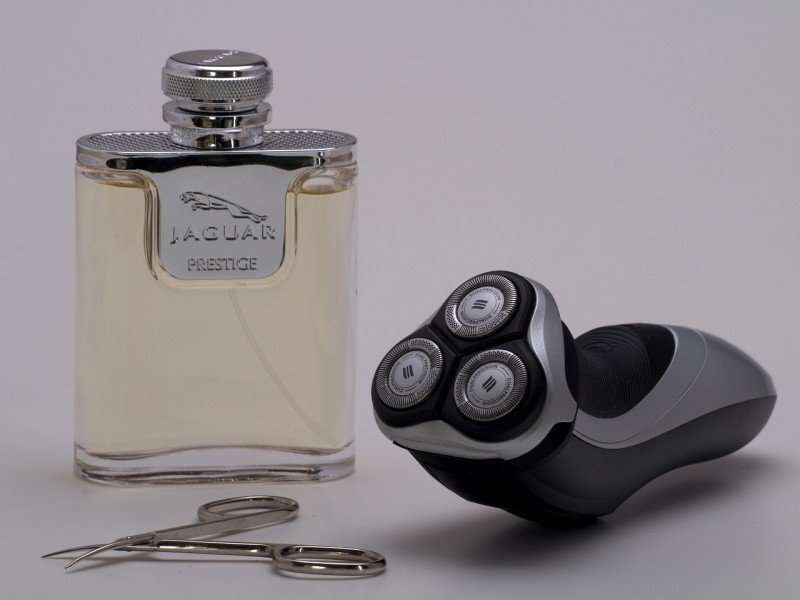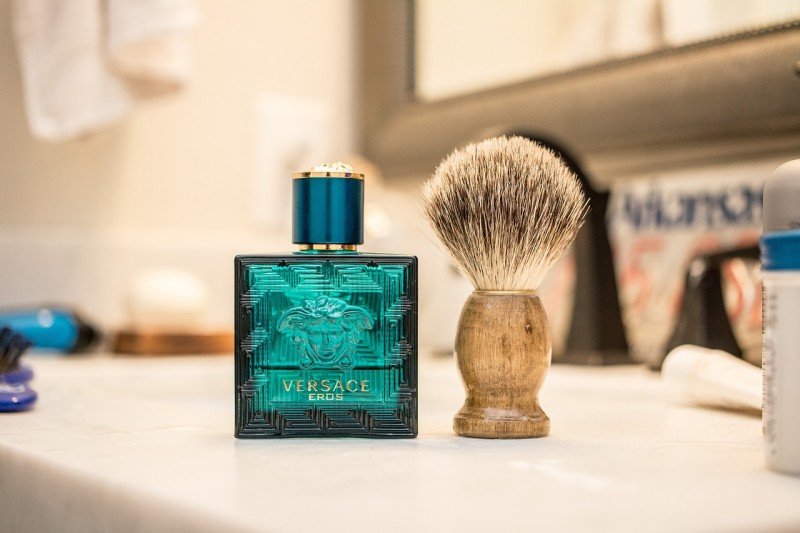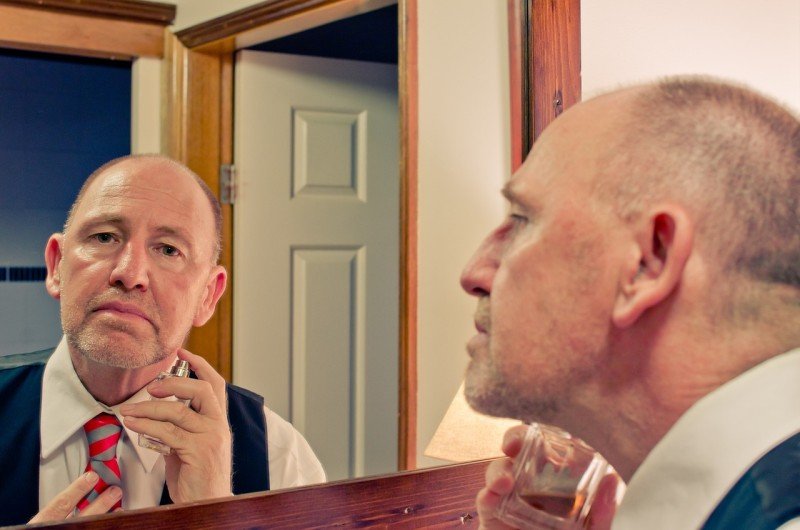You're tired of those pesky nicks and cuts every time you shave, aren't you? Well, you're in the right place.
We'll break down the best techniques for a smooth, injury-free shave. You'll learn the importance of blade angle, pre-shave rituals, and more.
Say goodbye to rushed, painful shaves and hello to mastering this daily ritual. Ready for a seamless shaving experience? Let's dive in.
Key Takeaways
- Opt for a safety razor to reduce the risk of nicks and cuts.
- Choose a razor based on your skin and hair type.
- Maintain a consistent blade angle of around 30 degrees for a close and smooth shave.
- Use proper grip technique and hold the razor at the end of the handle for control and precision.
Exploring the Benefits and Methods of Using a Safety Razor
You'll find that there are numerous benefits and techniques when it comes to using a safety razor. Razor selection, for one, can make a vast difference in your shaving experience. Opting for a safety razor gives you a close, clean shave and reduces the risk of nicks and cuts. It's about understanding your skin and hair type and choosing a razor accordingly.
You might want to consider a razor with a mild aggressiveness level for sensitive skin. This means the blade exposure is limited, reducing the chance of irritation. A slightly more aggressive razor might be more suitable for thick or coarse hair, as it can tackle dense hair without requiring multiple passes.
Now, let's delve into lathering techniques. It's not just about slapping on some shaving cream; it's an art. A good lather provides the necessary lubrication for a smooth, effortless glide of the razor. Start by wetting your shaving brush with warm water, then swirl it around your shaving soap or cream. The aim is to create a thick, creamy lather.
Apply the lather in circular motions, lifting the hairs and ensuring every bit of your skin is covered. This process also exfoliates your skin, removing dead skin cells and prepping it for a better shave. Remember, don't rush. Take your time in creating a lather and applying it properly.
In essence, mastering the use of a safety razor involves careful selection of the razor and honing your lathering techniques. Once you've got these down, you're set for a premium shave.
Understanding the Importance of Blade Angle and How to Maintain It
You've got to grasp the importance of blade angle in shaving. It's pivotal to a close, smooth shave without irritation. If it's too steep, you'll risk nicks. It's too shallow, and you won't get a close shave.
Regularly checking and adjusting the angle will help you maintain a clean and safe shaving routine.
Blade Angle Importance
Why aren't you paying more attention to the angle of your blade when it's so crucial for a smooth shave? Blade sharpness and shaving frequency play significant roles, but your blade angle is the key to a nick-free face.
Consider these points:
- A 30-degree angle is ideal for most razors.
- A too-steep angle can lead to cuts.
- A too-shallow angle mightn't cut hair effectively.
- Consistency is key; maintain the same angle throughout your shave.
- Practice makes perfect; your technique will improve over time.
Maintaining Blade Angle
Maintaining your blade angle requires patience, yet it's essential to achieving a superior, irritation-free shave. Optimal blade sharpness is critical, but the angle at which you hold the razor also significantly impacts your shave. A 30-degree angle is often recommended.
Remember, the sharper the blade, the less pressure you need. Let the razor do the work. Incorrect pressure can lead to nicks, cuts, and razor burn.
Your lather quality is equally important. A good lather provides the necessary cushion and glide for your razor. Avoid a lather that's too dry or too wet. It should have the consistency of yogurt.
Pre-Shave Rituals: Softening the Skin and Using Warm Water
Adopting a pre-shave ritual of softening your skin and using warm water reduces the risk of nicks and cuts during shaving. It's a step often overlooked but crucial to achieving a smooth, close shave without irritation.
Firstly, let's delve into exfoliation benefits. Regular exfoliation removes dead skin cells, unclogs pores, and primes your skin for shaving. It essentially paves the way for a smoother shave by elevating the hair strands off the skin, making it easier for the razor to cut through.
Secondly, pre-shave oil usage is pivotal in your pre-shave routine. It provides a layer of lubrication that softens the hair and protects your skin from the blade. It's the shield you didn't know you needed.
To paint a clearer picture, here are some practical steps to follow for your pre-shave ritual:
- Start by washing your face with warm water. This opens up your pores and softens your skin.
- Follow up with a gentle exfoliant. This will remove any dead skin cells and lift the hair strands.
- Rinse off the exfoliant and pat your skin dry.
- Apply a generous amount of pre-shave oil. This acts as a protective layer for your skin.
- Let the oil sit for a minute to allow it to penetrate the hair and skin.
Why Rushing Through Your Shave Can Lead to Nicks and Cuts
When you rush your shave, you're more likely to make mistakes that can cause nicks and cuts. It's crucial to take your time and be patient, allowing you to navigate the contours of your face more effectively.
Haste Creates Mistakes
You're setting yourself up for nicks and cuts in your rush to get through a quick shave. Time management in shaving and mindful shaving practices are key to a smooth, risk-free shave.
Consider these steps:
- Start by thoroughly washing your face with warm water. It opens up your pores and softens your hair.
- Invest in a good quality razor. Cheap ones can cause irritation and cuts.
- Apply a pre-shave oil to moisturize your skin.
- Use a shaving brush to lift your hair, making it easier to cut.
- Always shave in the direction of your hair growth.
Take your time. Don't rush. Mastery in shaving is achievable with patience and practice. Being mindful of each step ensures a flawless shave every time.
Importance of Patience
You'll notice that there's a significant decrease in nicks and cuts and a smoother shave overall if you practice patience and don't rush your shaving routine. Understanding patience is key here. Slow down, take your time and allow the blade to glide gently over your skin. It's not a race.
Practicing mindfulness during your shave can enhance the experience. Concentrate on the sensation of the blade against your skin, the smell of the shaving cream, and the sound of the razor. This can transform your shaving routine from a mundane task into a meditative experience.
You'll find that not only will you achieve a superior shave, but you'll also begin your day feeling relaxed and refreshed. Don't underestimate the power of patience and mindfulness.
Mastering the Proper Shaving Technique to Prevent Injuries
Don't underestimate the importance of mastering the proper shaving technique; it's a key factor in preventing injuries. Your grip technique and razor selection are paramount.
Firstly, focus on your grip technique. Holding the razor too loosely might make you lose control, while too tight a grip could lead to nicks and cuts. You should hold the razor at the end of the handle, letting it rest between your thumb and index finger. It should feel balanced, not forced.
Secondly, razor selection is crucial. Not all razors are made equal. You need to consider:
- The type of razor: Options include safety razors, cartridge razors, or straight razors. Each has its pros and cons, so find what works best for you.
- The blade: A dull blade can cause more harm than a sharp one. Change your blades regularly.
- The handle: Look for a handle that fits comfortably in your hand. It should be long enough for a firm grip and textured for control.
- The weight: A heavier razor might provide a closer shave but requires more control.
- The head: Some razors have flexible heads that adapt to your face's contours, reducing the risk of cuts.
Remember, shaving isn't a race. Take your time to prepare your skin and apply your shaving cream properly. Use short, gentle strokes and rinse the blade after each one.
Listening to your skin and adapting your technique accordingly is the final yet most important step. It's a skill; like all skills, it requires practice and patience.
The Significance of Post-Shave Balm and High-Quality Shaving Cream
Let's talk about how using a high-quality shaving cream and a post-shave balm can dramatically reduce skin irritation after shaving.
When it comes to the cream variety, you're spoiled for choice. However, always opt for one that contains moisturizing elements, like aloe vera or glycerin. These ingredients maintain your skin's hydration and reduce friction during shaving, thus lowering the risk of nicks and cuts.
The thickness of the cream also matters. A rich and creamy lather lifts the hair from your skin, providing a smooth path for your razor. It also forms a protective layer between the razor and your skin, minimizing direct contact and irritation.
Now, let's delve into the balm benefits. A post-shave balm isn't a luxury, it's a necessity. It soothes the skin after the abrasive action of shaving. Look for a balm containing anti-inflammatory components like chamomile or witch hazel. They help in reducing redness and calming the skin. Hydrating ingredients like shea butter or jojoba oil are also crucial. They replenish the skin's moisture, leaving it soft and supple.
Remember, a post-shave balm is different from an aftershave. While an aftershave mainly disinfects the skin, a balm is more focused on soothing and hydrating.
The Role of Consistent Razor Upkeep in Avoiding Shaving Mishaps
Maintaining your razor's sharpness is crucial and can drastically decrease the chances of shaving mishaps. The edge of your blade should always be in top condition to ensure a smooth, clean shave. Razor cleanliness and blade storage play a tremendous role in achieving this objective.
To master this art, following a few essential steps is necessary. Here's a concise, practical guide to assist you:
-
Always clean your razor after use: This prevents dirt and bacteria build-up. Rinse it thoroughly under hot water, ensuring to wash away any residual hair or shaving cream. It's not just about aesthetics; a clean razor performs better and lasts longer.
-
Dry your razor properly: Never leave your razor wet after use. Moisture can cause rust, which dulls the blade. Pat it dry gently with a towel, and ensure it's completely dry before storage.
-
Store your razor correctly: Blade storage is crucial. Keep your razor in a dry, cool place, away from humidity. Don't leave it in the shower or on a wet sink.
-
Change your blades regularly: A dull blade can cause nicks and cuts. On average, change your blade after every 5-7 shaves to maintain sharpness.
-
Consider a blade sharpener: A honing stone is a worthwhile investment if you're using a straight razor. Regular sharpening extends the life of your blade and enhances your shaving experience.
Frequently Asked Questions
What Are Some Natural Remedies to Treat Nicks and Cuts From Shaving?
Are you seeking natural remedies for shaving nicks and cuts? Aloe vera's soothing benefits are great for healing wounds. Witch hazel's astringent properties can also stop bleeding and reduce inflammation. Apply them directly to your skin.
How Often Should You Replace Your Razor Blade to Avoid Nicks and Cuts?
You should replace your razor blade every 5-7 shaves. Blade sharpness significantly impacts your shave, reducing the risk of nicks. Regular razor cleaning is also crucial for maintaining safety and efficiency.
How Does Shaving in the Direction of Hair Growth Help in Preventing Nicks and Cuts?
Understanding grain mapping's importance, you'll find that shaving in the direction of hair growth reduces skin tugging. This, coupled with thorough pre-shave preparation, significantly minimizes the risk of nicks and cuts.
What Are the Most Common Areas to Get Nicks and Cuts During Shaving, and How to Protect Them?
You're likely to nick your chin, neck, and ankles. Use sharper blades, clean your shaving tools regularly, and apply post-shaving skincare to these areas. It's crucial to take extra care in these sensitive spots.
Can Electric Razors Reduce the Risk of Nicks and Cuts? If so, How?
Yes, electric razors can reduce nicks and cuts. Proper electric razor maintenance and pre-shave preparation are key. You'll want to keep your razor clean and sharp, and prep your skin with a quality shaving cream.
Our Final Nicks & Cuts Prevention Thoughts
In conclusion, avoiding nicks and cuts while shaving isn't rocket science. Always use a safety razor, maintain the correct blade angle, and never rush your shave.
Pre-shave rituals like warming and softening your skin are crucial. Perfect your technique, use a high-quality shaving cream, and don't skip the post-shave balm.
Regular razor upkeep is equally important. With these tips, you're on your way to a smoother, safer shave.


